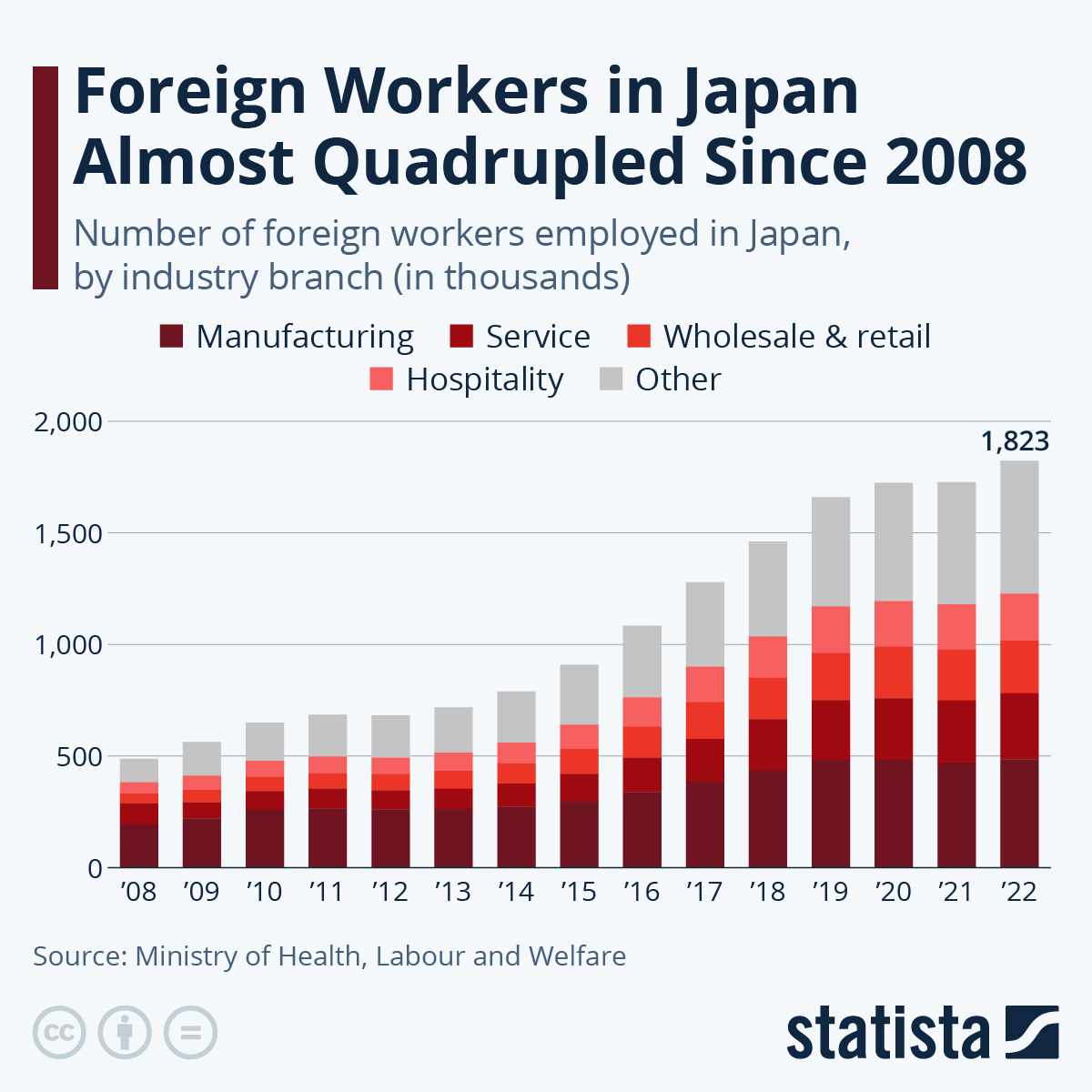After many years of slow growth in the number of foreign workers migrating to Japan, Japan has increased its efforts to attract new foreign workers in the past couple of years. The number of foreigners working in Japan has reached a new high of more than 1.8 million in 2022. Since the Japanese population is aging quickly, the Japanese government is feeling the need to bring in talent from abroad.
Immigrants, from different regions of West, but mainly from developing Asian countries, are now coming to Japan in larger numbers. According to data by the Ministry of Health, Labour and Welfare of Japan, the number of foreigners working in Japan since 2014, has more than doubled. The Japanese government reviewed immigration and refugee recognition laws in early 2019 with the aim of accepting an additional 340,000 workers to the country. Some special requirements were also considered to attract nurses, restaurant workers and laborers. In December of 2019, Prime Minister Shinzo Abe and his cabinet had already implemented procedures to foster the coexistence of Japanese and foreign nationals that came at a price tag of US$55.3 million.
In the light of the above provided information, it gives the
idea that the country is indeed serious about a more multicultural future. Still,
this new vision of Japanese society might be a hard sell: The measures adopted
have drawn some level of controversy and have even led to kerfuffle during
parliamentary debates. Right-wing politicians criticized the reform saying it
would bring in crime and extinguish the homogenous Japanese society.
Infographic by: Statista


